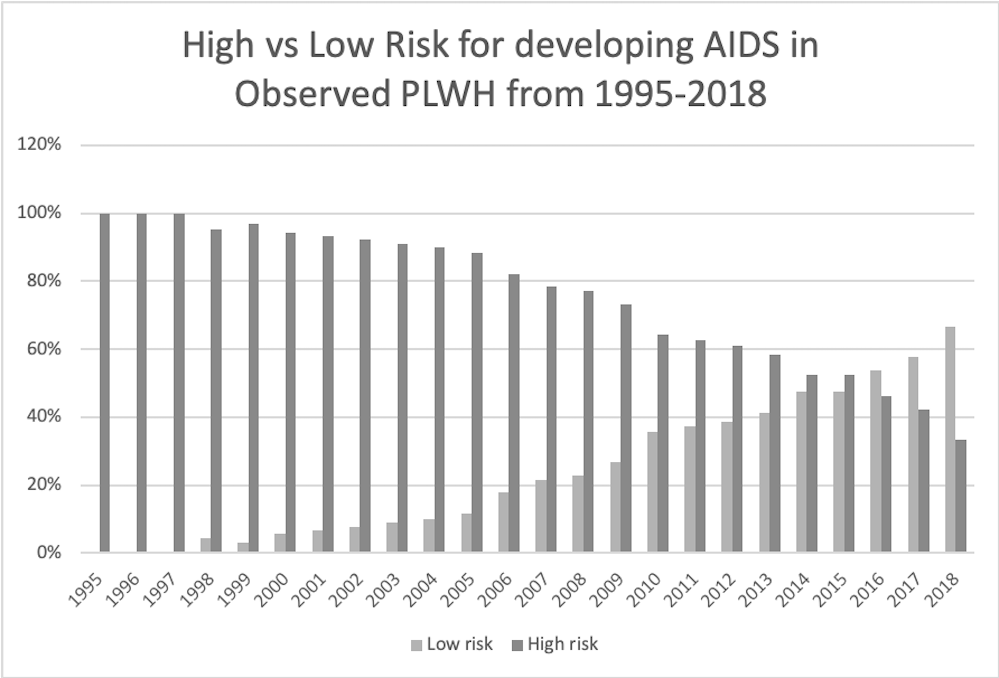Efficacy of Hope: Analysis of Quality HIV+ Deceased Donor Organ Availability
1Transplant, University of Alabama at Birmingham, Birmingham, AL, 2Transplant, University of Pennsylvania, Philadeplphia, PA
Meeting: 2021 American Transplant Congress
Abstract number: 855
Keywords: Donation, High-risk, HIV virus, Kidney/liver transplantation
Topic: Clinical Science » Kidney » Kidney Deceased Donor Selection
Session Information
Session Name: Kidney Deceased Donor Selection
Session Type: Poster Abstract
Session Date & Time: None. Available on demand.
Location: Virtual
*Purpose: The purpose of this study is to understand the number of organs actually available for HIV+ to HIV+ transplant utilizing data on a national scale, while taking into account organ quality.
*Methods: Using data collected at Center for AIDS Research Network of Integrated Systems (CNICS) centers (1995 – 2018), 6,223 deaths (potential deceased organ donors) among PLWH were identified. 1,137 were excluded due to cancer diagnosis. The remaining 5,086 were studied to assess organ quality/suitability. Potential deceased organ donors were further characterized as high (viral load > 200 copies/mL and CD4 < 200 cells/mm3) or low (viral load < 200 copies/mL and CD4 > 200 cells/mm3) risk for transmission of resistant virus. Kidney quality was assessed using the Kidney Donor Profile Index (KDPI) with a KDPI > 85 indicating poor quality. Liver viability was assessed via Fibrosis-4 (FIB-4) score, which measures AST, ALT, platelet count, and age, with a FIB-4 score > 3.25 indicating severe cirrhosis rendering the donor liver not suitable for transplantation.
*Results: In 1995, 100% of PLWH were considered high risk compared to just 42% in 2017 [figure]. 3,907 potential donors were high risk. Among low risk potential donors, 605 (9.72%) had a KDPI < 85, suggestive of high quality kidneys for transplant, and 967 (15.54%) had minimal (FIB-4 < 1.45) to moderate cirrhosis (FIB-4 1.45-3.25), suggestive of high quality livers for transplant. Importantly, 316 (32.7%) of potential liver donors were coinfected with hepatitis C.
*Conclusions: Since the introduction of antiretrovirals in the 1990’s, HIV care is increasingly more accessible, targeted, and effective, and thus, over time fewer potential donors were high risk. During the 23 years covered by this study, only 25% of deaths occurred among low risk PLWH with laboratory and clinical features suggestive of high quality, transplantable organs.
To cite this abstract in AMA style:
Owens GE, Shelton B, MacLennan P, Sawinski D, Locke JE. Efficacy of Hope: Analysis of Quality HIV+ Deceased Donor Organ Availability [abstract]. Am J Transplant. 2021; 21 (suppl 3). https://atcmeetingabstracts.com/abstract/efficacy-of-hope-analysis-of-quality-hiv-deceased-donor-organ-availability/. Accessed December 12, 2025.« Back to 2021 American Transplant Congress

